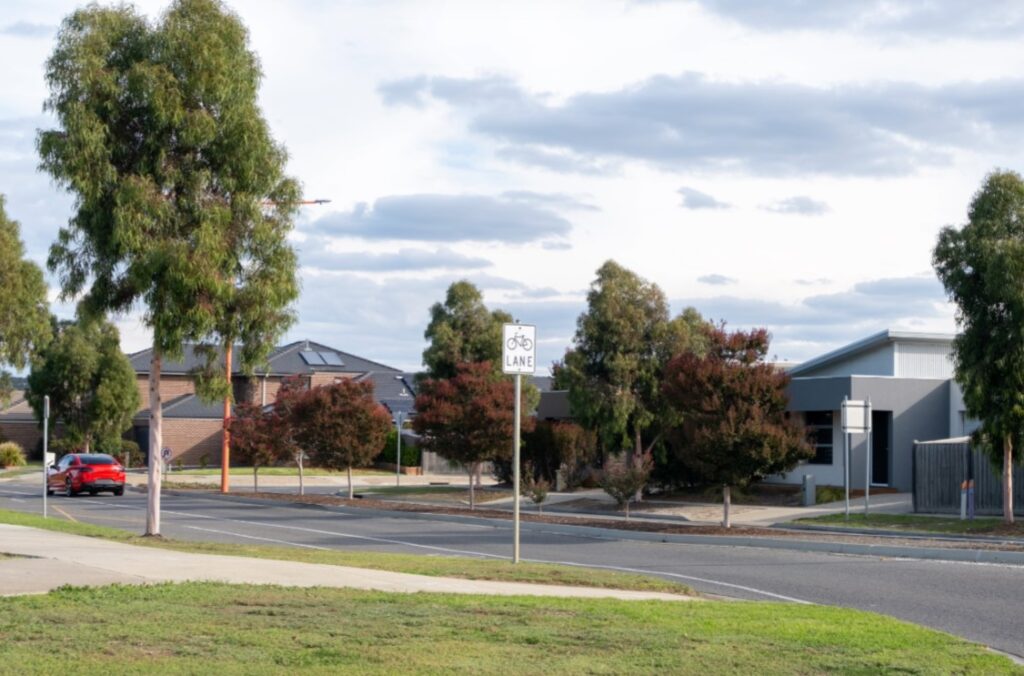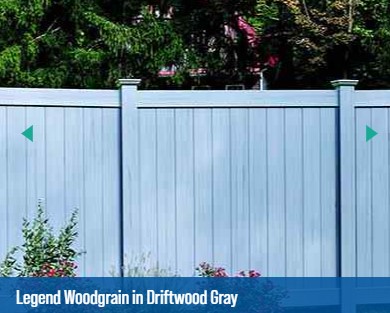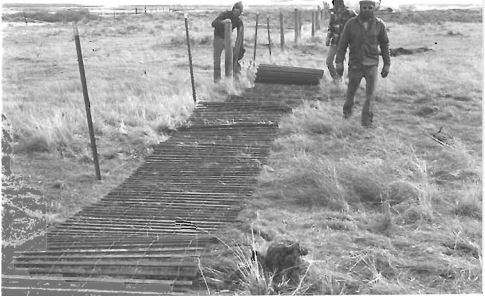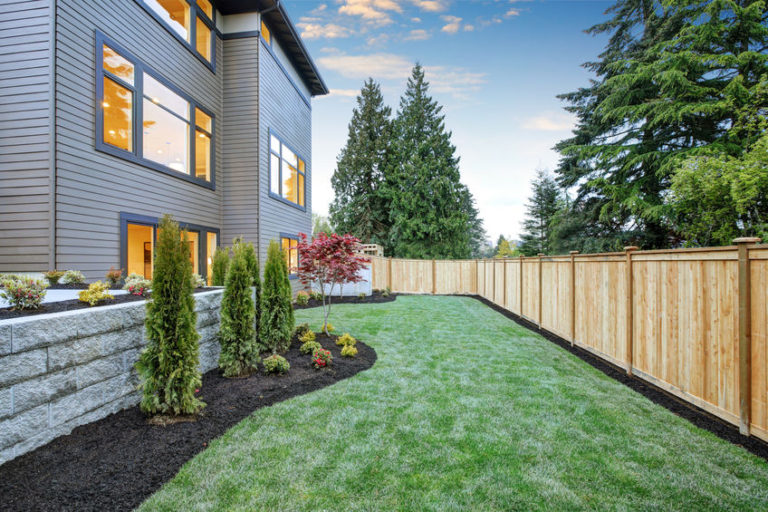
Where you are allowed to place your fence in relation to your property line is a common concern for many NJ property owners. Property lines, fence laws, and your legal obligations regarding your neighbor’s property can help you make informed decisions.
Clear communication and proper planning are important when dealing with a shared property line.
Whether you’re installing wood, vinyl, or chain link fences, you have to be aware of local regulations and in order to maintain good relations with your neighbors. The fact is, the exact location of the property line may be in dispute and if you don’t have an official property survey, it will be your word against your neighbor’s. Here are some of the legal considerations and best practices for ensuring your new fence meets all necessary requirements.
New Jersey-Specific Fence Regulations
While it’s possible to place a fence directly on the property line in many parts of New Jersey, doing so often requires more than just a simple installation. Many municipalities have specific regulations that dictate how close to the boundary line a fence can be placed, as well as what is required in terms of permissions or agreements with neighbors.
Here are some specific considerations to be aware of:
Property Surveys: To ensure you’re placing the fence correctly, having a property survey done is essential. This will clearly define the boundary lines and help avoid disputes with neighbors over where the fence is being erected. Without an accurate survey, you run the risk of unintentionally encroaching on neighboring property, which could lead to legal complications.
Shared Boundary Fences: If you’re planning to place the fence directly on the property line, both you and your neighbor technically share ownership of the fence. This means that any decisions regarding its upkeep, repair, or replacement will also need to involve both parties. It’s a good practice to discuss your plans with your neighbor ahead of time and, if possible, create a written agreement detailing each party’s responsibilities.
Setback Requirements: Some New Jersey municipalities have setback requirements that may prevent you from placing your fence directly on the property line. For example, you may be required to set the fence back a few inches or feet from the boundary, ensuring it is clearly within your property. These setback requirements are designed to reduce potential conflicts with neighbors and ensure proper maintenance access.
Fence Height and Appearance: Depending on your municipality, there may be specific height restrictions for fences placed along a property line. Typically, front yard fences are limited to 4 feet, while backyard fences may be allowed to reach 6 feet in height. Additionally, if you are installing a fence on a shared property line, your neighbor may have input on the appearance or material of the fence, particularly if the fence will impact the aesthetics or light in their yard.
Neighbor Relations and Communication
Building a fence directly on the property line can sometimes lead to tension with neighbors if not handled correctly. To avoid disputes:
- Start the Conversation Early: Before installing a fence along the property line, it’s important to inform your neighbors of your plans. Discussing the fence location, type, and height in advance can prevent misunderstandings and ensure everyone is on the same page.
- Document Agreements: If you and your neighbor agree to share responsibility for the fence (in terms of costs or maintenance), it’s wise to document these agreements in writing. This helps clarify who is responsible for what in the future, preventing any potential disagreements down the road.
- Avoid Building a “Spite Fence”: New Jersey law prohibits “spite fences,” which are built with the intention of annoying or obstructing a neighbor rather than serving a legitimate purpose. If your neighbor feels your fence was built maliciously—perhaps by blocking their view or sunlight—they could file a lawsuit. To avoid this, ensure your fence is built for practical reasons, such as privacy, security, or property delineation, and that it complies with local ordinances.
When it comes to installing a fence on your property line, maintaining good neighborly relations is crucial. Open communication can prevent misunderstandings and potential disputes, ensuring a smooth process. Here’s why it matters and how you can approach it.
Importance of Discussing Plans with Neighbors
Before you start building, it’s important to discuss your fencing plans with your neighbors. They may have opinions or concerns about the placement, height, or type of fence you’re considering. By involving your neighbors in the discussion, you can address their concerns upfront, making them feel respected and heard. This is especially important if you’re planning to build a boundary fence, as it directly affects both properties.
Tips for Maintaining Good Neighborly Relations
Initiate the Conversation Early: Approach your neighbor as soon as you start planning your fence. This shows respect and consideration for their input.
Be Transparent: Share all relevant information, including the type of fence (whether it’s a simple chain link fence, a concrete block wall, or another material), the exact location, and the timeline for construction.
Listen Actively: Pay attention to your neighbor’s concerns and suggestions. They might have valuable insights or preferences that could influence your decisions.
Be Willing to Compromise: Be open to making adjustments based on your neighbor’s feedback. For instance, if they prefer a different type of boundary fence, consider whether their suggestion is feasible.
Document Agreements: If you come to any agreements, such as who will be responsible for maintenance or sharing costs, document them in writing to avoid future misunderstandings.



Wood grain vinyl privacy fence available from Eastcoast Fence
Common Property Line Disputes in New Jersey
Property line disputes are relatively common in New Jersey, especially when homeowners make changes to their property, such as installing fences, driveways, or other permanent structures. These disputes often arise when boundaries are unclear, poorly documented, or when one party inadvertently—or intentionally—encroaches on their neighbor’s land. Here are some common property line disputes in NJ and the steps you can take to resolve them, including how New Jersey law addresses such conflicts.
Common Property Line Disputes
Fence Encroachment: One of the most common issues involves fences that are either mistakenly or deliberately placed across property lines. Encroachment disputes often arise when a homeowner installs a fence without an accurate property survey, leading to claims that the fence intrudes on a neighbor’s property.
Boundary Line Disagreements: Sometimes property lines are not clearly defined or documented, leading to disputes over where one property ends and another begins. These disagreements can become heated, especially when one party believes the other is using their land.
Adverse Possession Claims: Adverse possession occurs when someone occupies and uses a portion of another’s land without permission for an extended period (typically 30 years in NJ). If certain legal requirements are met, the trespasser could claim ownership of that land. Property owners who do not clearly define and monitor their property boundaries may be at risk of such claims.
Overhanging Branches or Root Encroachment: Trees or bushes that grow along property lines can lead to disputes when branches or roots cross into a neighbor’s property, causing damage or obstruction. In New Jersey, property owners generally have the right to trim encroaching branches or roots, but disputes can still arise over the extent of these actions and responsibility for any resulting damage.
Shared Driveways or Easements: Another common source of tension is the use of shared driveways or easements. Disagreements can arise over access rights, upkeep responsibilities, and any modifications made to shared property.
Possible Agreements or Shared Costs
In some cases, neighbors can benefit from sharing the costs of a boundary fence. This can be particularly appealing if you’re planning to install something substantial like a concrete block wall, which can be more expensive than a simple chain link fence.

Cost Sharing: Propose splitting the cost of the fence. This can make it more affordable for both parties and increase the likelihood of agreement.
Maintenance Responsibilities: Decide who will be responsible for the upkeep of the fence. This could be shared or assigned to one party.
Design Choices: Agree on the design and materials used. Whether it’s a simple chain link fence or a more durable concrete block wall, mutual agreement can prevent conflicts.
Documentation: Put all agreements in writing. This helps ensure that both parties are clear on their responsibilities and expectations.
By fostering good communication and cooperation with your neighbors, you can create a mutually beneficial situation. A well-placed boundary fence not only enhances privacy and security but also strengthens your relationship with those living next door.
Maintaining good neighborly relations and reaching agreements on shared costs or responsibilities can make the process of installing a fence smoother and more pleasant for everyone involved.
Legal Considerations
When planning to install a new fence in New Jersey, property owners have to understand local zoning laws and regulations. Local fence laws vary significantly from one municipality to another, and failing to comply can lead to complications. Before starting your project, verify the specific requirements in your area. This typically involves contacting your local government or municipality to obtain information on permissible fence heights, materials, and proximity to property boundaries.
Checking with local authorities ensures that your fence is constructed within the legal framework and aligns with the actual property line. Ignoring these regulations can result in legal disputes with neighbors, especially if the fence encroaches on their property. One common issue property owners face is the construction of a “spite fence,” which is built out of malice rather than necessity. Such fences can lead to lawsuits and forced removal, adding unnecessary costs and stress.
To avoid potential conflicts, always ensure your fence is erected on your side of the property boundary. Conducting a property survey can help you determine the precise location of your property lines. Clear communication with neighbors about your fencing plans can also help prevent misunderstandings and foster good relations. By adhering to local fence laws and respecting property boundaries, you can smoothly navigate the legal aspects of installing a new fence.
Property Surveys
Having an accurate property survey is essential for any property owner planning to install a fence. A property survey precisely defines the boundaries of your land, ensuring that you know exactly where to place your fence directly on your property line. This is particularly important given the various local ordinances that may affect fence placement, such as those governing boundary fences and structures like concrete block walls.
Obtaining a property survey involves hiring a licensed surveyor who will measure your land and provide a detailed map of your property lines. You can find a qualified surveyor through local professional associations or by seeking recommendations from your municipality. It’s a small investment that can save you significant time and money in the long run.
The consequences of incorrect property boundaries can be severe. If you build your fence without a proper survey, you risk encroaching on your neighbor’s land, which can lead to legal disputes and costly adjustments. Additionally, violating local ordinances regarding front yard fences or other specific regulations can result in fines and mandated removal of the non-compliant structure. Accurate property surveys help you avoid these issues, ensuring that your new fence benefits both you and your neighbors by clearly defining each party’s property.
Alternatives to Placing a Fence Directly on the Property Line
When considering fencing options, it’s essential to explore alternatives to placing a fence directly on the property line. These alternatives can offer flexibility and potentially reduce conflicts with neighbors. Here are three practical options:
Placing the Fence Slightly Within Your Property Boundary
One straightforward alternative is to place your own fence slightly within your property boundary rather than right on the fence line. This approach ensures that the entire structure is on your property, reducing the potential for disputes with neighbors. By positioning the fence a few inches inside your boundary, you maintain clear ownership and responsibility for fence maintenance. This method simplifies legal matters and ensures you have full control over the design and upkeep of your fence.
Shared Fences and How They Work
Another viable option is to collaborate with your neighbor on a shared fence. Shared fences are constructed on the property line and jointly owned by both parties. This arrangement can be cost-effective and promote cooperation between neighbors. However, it’s crucial to have a clear, written agreement outlining each party’s responsibilities for fence maintenance, repairs, and any associated costs. Transparent communication and legal documentation help prevent misunderstandings and ensure mutual satisfaction with the shared fence arrangement.
Planting Hedges or Other Natural Barriers
For those seeking a more natural solution, planting hedges or other vegetation as a boundary marker can be an effective alternative to traditional fencing. Hedges, bushes, or trees can create a visually appealing and environmentally friendly barrier.
Regular maintenance is required to keep the plants healthy and well-trimmed, ensuring they do not encroach on neighboring properties. While this approach may not provide the same level of security as a physical fence, it offers a softer, more integrated look that complements the landscape.
Each of these alternatives has its advantages and considerations. If you choose to place your own fence within your property boundary, share a fence with a neighbor, or use natural barriers, the right solution depends on your specific needs and circumstances.
The Benefits of Boundary Fences
Boundary fences benefit both property owners and neighbors when thoughtfully planned and executed. They offer a sense of privacy, security, and clear property delineation. By engaging in open communication, considering shared costs and responsibilities, and exploring alternative options, you can foster a positive relationship with your neighbors.
Whether you choose to place the fence slightly within your boundary, share the construction and upkeep with your neighbor, or opt for natural barriers, carefully evaluating your options ensures a harmonious and practical solution for all parties involved.



